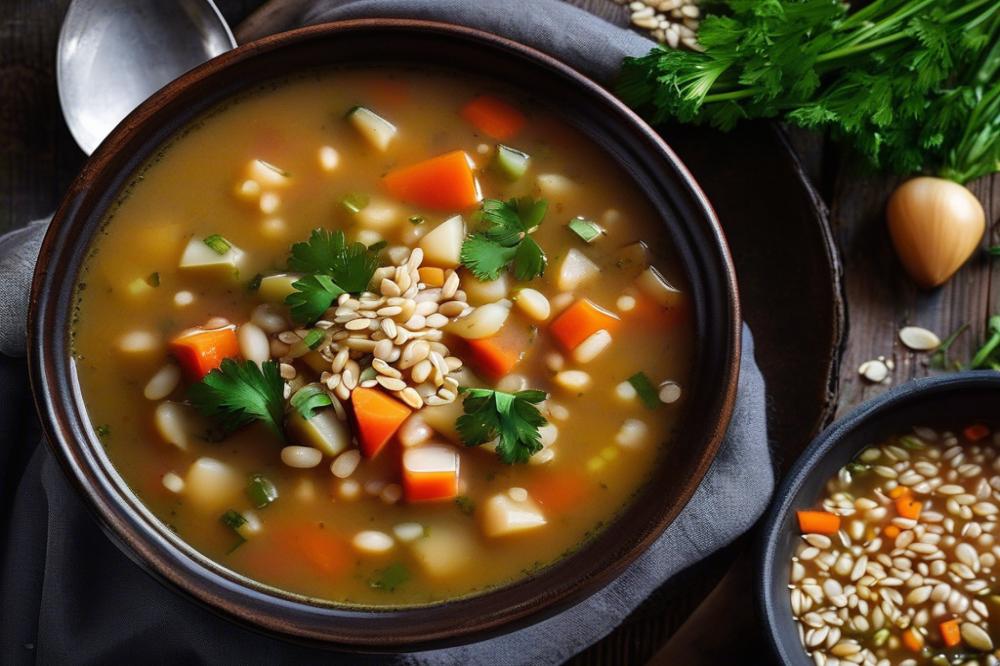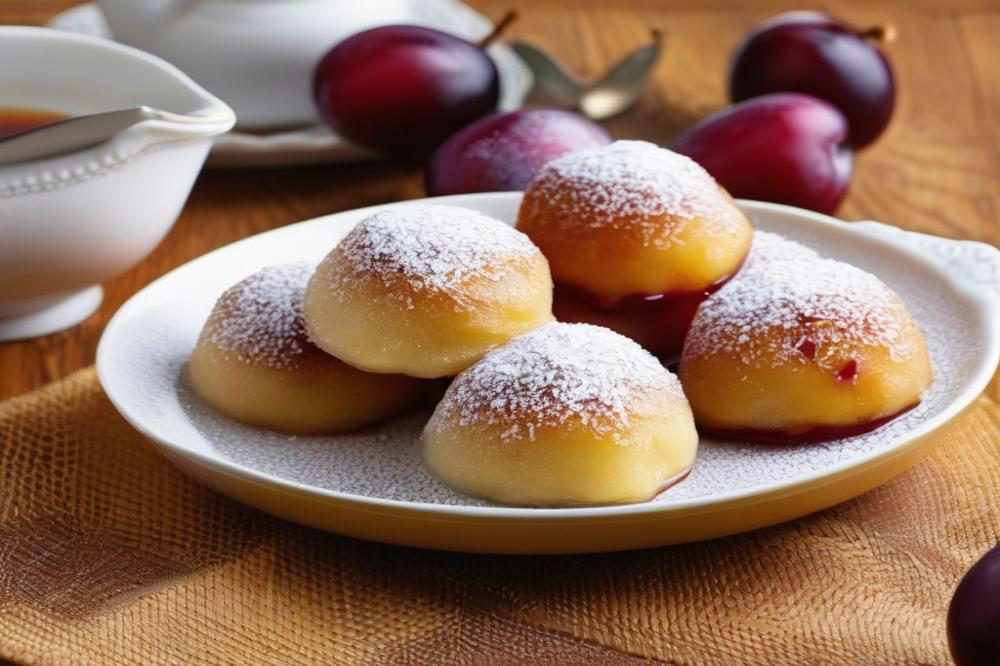Introduction
recipebix.com/how-to-make-ameijoas-na-cataplana-clams-in-a-traditional-portuguese-stew”>Pão de Ló is a beloved traditional dessert in Portugal, often referred to as recipebix.com/alentejo-s-secret-dish-carne-de-porco-com-migas-pork-with-bread-crumbs”>Portuguese sponge cake. This delicacy is not just a treat; it represents a significant part of the nation’s culinary heritage. Its origins trace back to the medieval era, where it became a staple for celebrations and special occasions. Historical records show that this cake was enjoyed by royals and commoners alike, making it a symbol of unity in Portuguese cuisine.
One striking characteristic of Pão de Ló is its light and fluffy texture. The recipe relies heavily on eggs and sugar, which contribute to its airy quality. When baked correctly, the cake achieves a soft, almost ethereal feel, making it a favorite among dessert lovers. This emphasis on texture is essential; the cake should be so light that it feels like a whisper of sweetness on the palate.
Many variations of this cake exist, with regional differences in flavor and texture. Some regions prefer a denser version, while others focus on achieving that iconic lightness. Regardless of the variation, the core ingredients remain the same. Bakers pay close attention to mixing methods and baking times, as they can dramatically affect the final result. In essence, the way the cake is made can turn a simple recipe into an extraordinary dessert experience.
Understanding Pão de Ló

This popular dessert hails from Portugal. Characterized by its airy and light texture, it is a type of sponge cake that has delighted many over the years. The structure of this cake relies heavily on the fluffy nature provided by eggs and sugar. When whipped properly, these ingredients create a base that is both delicate and moist.
Different regions of Portugal showcase their take on this traditional cake. For instance, in the Algarve, bakers often incorporate almond flour, resulting in a denser texture. In contrast, the version from Évora is known for its rich, sweet flavor, often enhanced with local citrus zest. Each area proudly presents its own distinct variations, making the cake a true representation of Portuguese cuisine.
Eggs play an essential role in achieving the desired fluffiness of the cake. They not only add moisture but also provide structure when whipped. Similarly, sugar combines with the egg whites to create that essential meringue effect, essential for lifting the cake as it bakes. The balance between these two ingredients is crucial to the final product.
Baking techniques also differ among recipes. Some versions may call for a gentle folding action, while others recommend a vigorous mixing to incorporate air. This choice impacts the texture immensely. Ultimately, perfecting the Pão de Ló involves understanding these nuances and fine-tuning the method based on personal preference.
Ingredients and Quantities

To create a delightful Pão de Ló, gather the following ingredients:
- 6 large eggs
- 200 grams of granulated sugar
- 200 grams of all-purpose flour
- 1 teaspoon of baking powder
- A pinch of salt
Each ingredient plays a vital role in the texture and flavor of the cake. The large eggs contribute to the fluffy nature of the dessert. They also help to bind the ingredients together. Granulated sugar adds sweetness and moisture, ensuring a soft consistency. All-purpose flour serves as the foundation, offering structure. Baking powder provides the necessary lift, making the cake rise. A pinch of salt is essential; it enhances the overall flavor balance.
Nutritional Information
When enjoying a slice of this sponge cake, it’s good to be aware of its nutritional content. A typical serving contains roughly 200 calories. You’ll find it has about 30 grams of carbohydrates, which primarily come from the flour and sugar. Proteins are present, coming mostly from the eggs, totaling around 6 grams per serving. Fats are minimal, usually less than 1 gram, making it a light dessert choice.
Key ingredients provide several health benefits. Eggs are an excellent source of protein and essential nutrients. They help in muscle building and overall health. Sugar, while often criticized, can provide quick energy. Moderation is key to enjoying it. Flour is a staple in many diets, providing carbohydrates for energy. When prepared correctly, this traditional cake can be part of a balanced diet. However, consider portion sizes if you’re watching caloric intake.
Cooking Instructions

Step-by-step method for preparing and baking Pão de Ló
Preparing a traditional Portuguese sponge cake requires careful attention to detail. Start by preheating your oven to 350°F (175°C). Use a round cake pan, typically 9 inches in diameter. Grease the pan lightly with butter and dust it with flour to prevent sticking.
Next, separate the egg whites from the yolks in a clean bowl. Using an electric mixer, beat the egg whites until soft peaks form. Gradually add sugar while continuing to whisk until the mixture becomes glossy and stiff. In another bowl, whisk the egg yolks until they are pale and thick.
Gently fold the egg yolks into the whipped egg whites. Be careful not to deflate the mixture. Sift flour into the batter gradually, folding it in until well combined. This technique helps to keep the batter airy. Pour the batter into the prepared pan and smooth the top with a spatula.
Bake for approximately 30 minutes or until the cake springs back when lightly touched. The cake should be golden and a skewer inserted in the center should come out clean. Allow it to cool in the pan for ten minutes before transferring it to a wire rack.
Tips for ensuring a light and fluffy cake
Eggs are the foundation of this dessert; thus, using fresh, room-temperature eggs is essential. Once they are at room temperature, they whip up better and incorporate air more effectively.
Be cautious during the folding process. Avoid beating the mixture vigorously, as this can deflate the air bubbles needed for a light texture. A gentle, figure-eight motion works well for folding in the flour.
Consider sifting the flour before adding it to the batter. This step lightens it further, promoting fluffiness. Additionally, do not open the oven door while baking. Sudden temperature changes can cause the cake to sink.
Common mistakes to avoid when baking
One frequent error is underbaking the cake. It might seem tempting to check early, but this can lead to a dense texture. Always follow the timing recommendations; trust your oven.
Another mistake is overmixing the batter. This can result in a cake that is tough rather than fluffy. Remember that the goal is to keep as much air in the mixture as possible.
Finally, using improper oven settings can jeopardize your results. Ensure your oven is fully preheated before placing the cake inside. Adjust your baking time if your oven runs hot or cold, to achieve that perfect, airy structure.
Serving Suggestions

When it comes to presenting this fluffy cake, simplicity often shines. A simple dusting of powdered sugar on top can bring out its elegant nature. For added flair, consider a light drizzle of dark chocolate or a sprinkle of cocoa powder. These techniques can enhance the visual appeal without overwhelming the traditional flavor.
Ideas for Serving
Serving Pão de Ló with fresh fruits can elevate the experience. Strawberries, raspberries, or even peaches make excellent choices. These fruits not only add color but also balance the sweetness of the dessert. Slices of cake can be arranged on a tiered stand for a charming presentation at gatherings.
Suggestions for Accompaniments
Pairing this Portuguese delicacy with whipped cream can create a delightful contrast. Another option is to serve it alongside gelato or ice cream, allowing the warmth of the cake to meld with the cold creaminess. Nuts, such as almonds or pistachios, can add a crunchy texture. They also complement the rich flavor profile of the recipe.
Pairings with Beverages
Tea or coffee can enhance the enjoyment of a slice. The earthy notes in these beverages harmonize well with the light tenderness of the cake. Alternatively, a glass of dessert wine can create a unique pairing. Sweet wines, such as port or muscat, can accentuate the flavors of the eggs and sugar found in the dessert. This brings out the complexity present in traditional Portuguese cuisine.
The Sweet Legacy of Portuguese Baking
Pão de Ló holds a cherished place in Portuguese cuisine. This delightful dessert is not merely a treat; it represents celebration and community. Family gatherings often feature this cake, showcasing its role in traditions. People enjoy its light, airy texture, making it perfect for any occasion. From birthdays to holidays, it adds sweetness to life’s special moments.
Trying this recipe at home allows you to experience a bit of Portugal. You don’t need to be an expert baker. With simple ingredients and straightforward instructions, anyone can create it. Gather your family in the kitchen and make this a fun activity. Taste the joy as it fills your home with delicious aromas.
Ultimately, baking is more than just following a recipe. It nourishes our relationships. Sharing desserts like these fosters connections with loved ones. As you present and enjoy your creation, you cultivate memories that can last a lifetime. Discovering new flavors and techniques can enhance your skills too. What better way to indulge your curiosity than through a slice of homemade cake?



